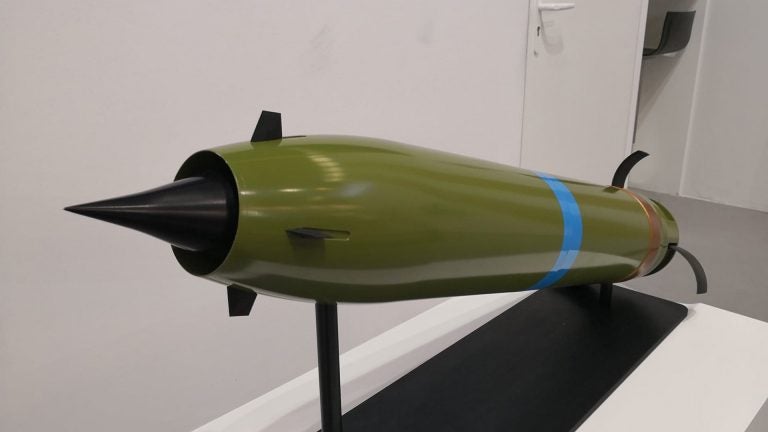Raytheon announced that it has been contracted by the US Army to begin the development of a solid fuel ramjet boosted artillery round known as XM1155 Extended Range Artillery Projectile (ERAP). This will be done in collaboration with the Netherlands Organization for Applied Scientific Research (known as TNO) who will provide the ramjet. The new round will be able to reach out beyond 100 km and hit moving targets both on land and at sea. The ERAP is a key part of the US Army’s renewed focus on long range precision fires.
The choice of Raytheon is interesting because Boeing and Nammo together had already been developing such a projectile (cover image) for several years with their own money. Nammo’s success in the realm of solid fuel ramjets can be seen by their selection for the THOR-ER program which will involve propelling larger missiles. The likely explanation is the Army seeks to take advantage of Raytheon’s experience with the Excalibur GPS-guided shell that recently demonstrated a laser seeking capability. Of great importance is Raytheon’s success in reducing the cost per round which is vital given the quantities associated with cannon artillery.
XM1155 was announced as part of the ERCA program back in 2018, however, very few details were announced besides that it would be a high performance terminally guided round for attacking high-value targets like air defenses and artillery. Using rocket assistance and a longer barrel the Army has been able to hurl rounds out to 70 km. Evidently, that wasn’t enough, however, the use of a ramjet brings with it compromises. Internal volume is already limited by having to fit in a gun tube and the need for a terminal guidance package stresses this further. This will likely result in a comparatively light explosive payload, though this isn’t a big issue given the emphasis on point targets. The larger rounds will also likely limit ammunition capacity on self-propelled platforms.
 Your Privacy Choices
Your Privacy Choices


